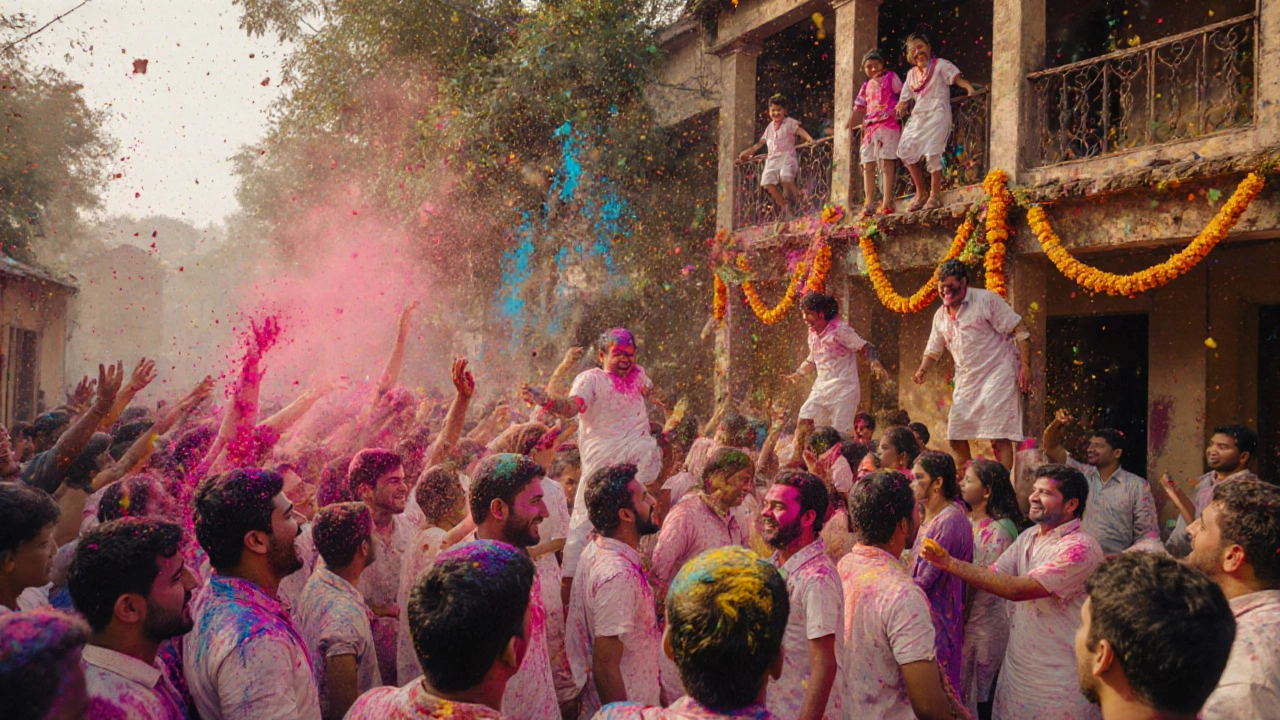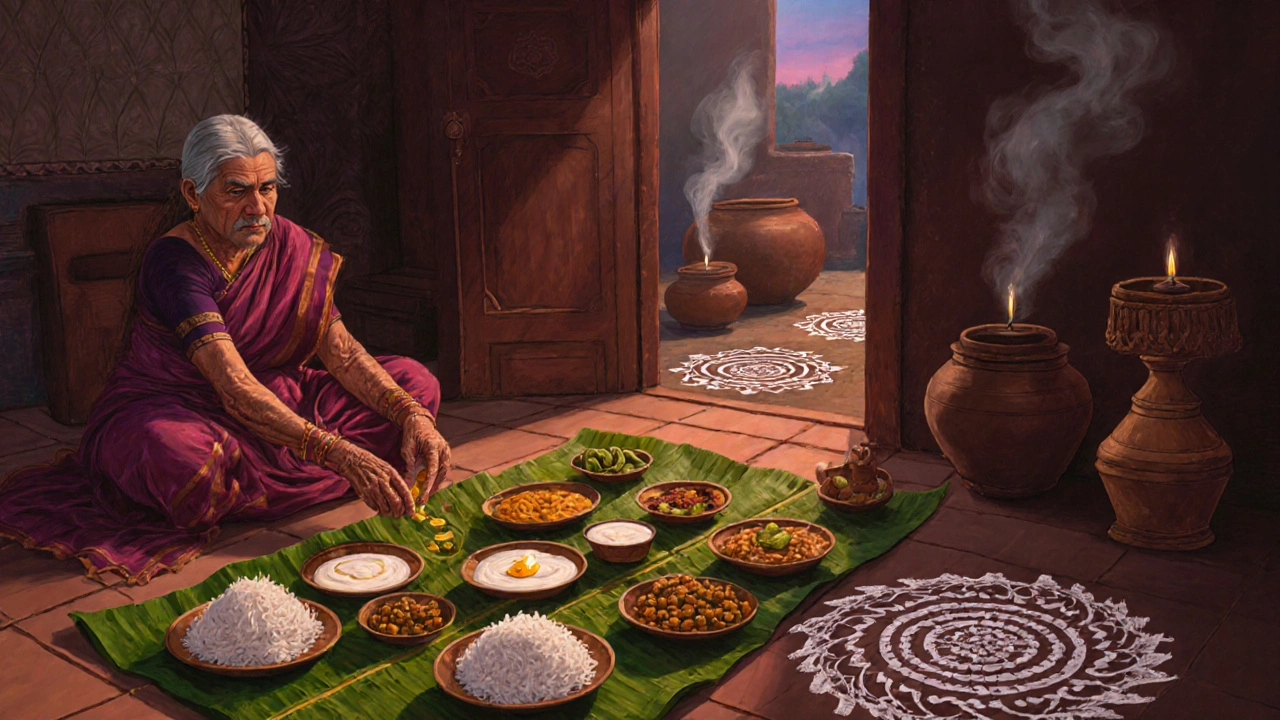Cultural Depth Calculator
Experience India's Living Culture
How many cultural elements would you encounter in one day? Select your scenario:
Your Cultural Experience
Cultural Layers 0 in one day
There’s no official ranking for the "best culture in the world," but if you walk through a village in Rajasthan, sit through a Kathakali performance in Kerala, or share a meal with a family in Varanasi, you start to understand why India often comes up in this conversation. It’s not about one thing-it’s about the weight of history, the rhythm of daily rituals, the way food, language, music, and faith weave together without ever losing their individual voices.
India’s culture isn’t a museum-it’s alive
Many countries have ancient traditions, but few have maintained them with such daily intensity. In India, culture isn’t something you visit. You breathe it. You hear it in the call to prayer echoing over temple bells. You taste it in the spice blend that changes from one street to the next. You feel it in the way strangers offer you tea without asking your name.
There’s no single "Indian culture." There are over 2,200 ethnic groups, 19,500 languages and dialects, and 7 major religions coexisting in one country. In the north, Holi explodes in color and music. In the south, Pongal is celebrated with rice art and cow decorations. In the northeast, tribes like the Naga perform rituals unchanged for centuries. This isn’t diversity as a buzzword-it’s the structure of everyday life.
Food as cultural expression
Ask someone what makes Indian culture unique, and they’ll likely mention food. But it’s not just about curry or naan. It’s about how food carries meaning. In Gujarat, families fast on Ekadashi and break it with sweet, simple dishes. In Tamil Nadu, a traditional meal is served on a banana leaf, with specific order: rice first, then lentils, then pickles, then dessert. In Kashmir, Wazwan feasts include 36 courses, each prepared by master chefs trained for decades.
Every region has its own rules. In some parts of India, eating with your hands isn’t rude-it’s sacred. In others, you never serve food to someone before serving the elders. These aren’t just customs. They’re social contracts passed down through generations.
Religion isn’t separate from daily life-it’s woven into it
India is home to 80% of the world’s Hindus, 14% of the world’s Muslims, and the largest populations of Sikhs, Jains, and Zoroastrians outside their historic homelands. But what stands out isn’t the numbers-it’s how faith lives in the open.
Temple bells ring at dawn in Varanasi. Mosques in Delhi share alleyways with Sikh gurdwaras serving free meals to anyone. Jain monks sweep the ground before walking to avoid harming insects. In rural Maharashtra, families paint kolams-floral patterns made of rice flour-outside their doors every morning as offerings to the earth.
There’s no separation between sacred and secular. A wedding might include Hindu rituals, Christian hymns, and Muslim prayers. A child’s first haircut might happen at a shrine. Religion doesn’t dictate culture here-it’s the thread that holds it together.

Art, dance, and music that never stopped evolving
India’s classical dance forms-Bharatanatyam, Odissi, Kuchipudi, Kathak-are over 2,000 years old. Yet they’re not relics. Young dancers in Bangalore mix traditional mudras with contemporary choreography. Folk music from Punjab’s Bhangra has become global club music. In Kerala, traditional percussion ensembles like Thayambaka still draw crowds of thousands during temple festivals.
Handloom weaving isn’t just an industry-it’s identity. The Banarasi silk sari takes 15 days to weave by hand. The Patola from Gujarat uses a technique so complex, only 12 families in the country still know it. These aren’t tourist souvenirs. They’re heirlooms. Daughters inherit looms. Sons learn dye recipes from their grandfathers.
Why other countries don’t match India’s scale of living culture
Japan has precision. Italy has art. France has philosophy. But few places have culture that’s simultaneously ancient, diverse, and deeply embedded in the lives of over 1.4 billion people.
In Europe, many traditions are preserved in festivals or museums. In India, they’re practiced in homes, markets, and fields. A child in Delhi learns Sanskrit shlokas before they learn multiplication. A grandmother in Tamil Nadu still recites folk tales that predate colonial rule. A farmer in Odisha plants rice according to lunar calendars.
Other countries may have more polished tourist experiences. But India’s culture doesn’t perform for visitors. It exists whether you’re there or not. That’s what makes it resilient. That’s what makes it real.
Cultural tourism in India isn’t about checking boxes
When you visit India for culture, you don’t just see monuments. You sit in a courtyard in Jaipur as a musician plays the sitar under a banyan tree. You join a family in Assam as they ferment rice for a traditional drink. You watch a woman in Rajasthan paint her hands with henna while telling you the story behind each symbol.
There’s no curated path. No ticketed experience. You have to be willing to wander. To sit quietly. To accept that you won’t understand everything. And that’s the point. Culture isn’t something you consume. It’s something you’re invited into.

What you’ll actually experience
- In Varanasi: A sunrise boat ride past burning ghats, where death is seen as a transition, not an end.
- In Ladakh: Monks chanting in a 1,000-year-old monastery, their voices echoing across the Himalayas.
- In Chennai: A 4-hour Carnatic music concert where the audience doesn’t clap-they hum along.
- In Sikkim: A family offering prayers to mountains they believe are gods.
- In Mumbai: A street vendor who makes 12 types of chaat, each with a secret spice mix passed down from his grandmother.
These aren’t performances. They’re routines. They’re habits. They’re how people live.
It’s not perfect-but it’s real
India isn’t a cultural utopia. It struggles with inequality, pollution, and modernization. But even in chaos, tradition holds. In Delhi’s slums, children learn classical dance from donated instruments. In villages without electricity, women sing folk songs to keep their daughters awake at night.
What makes India’s culture stand out isn’t its beauty alone. It’s its endurance. It’s survived invasions, colonization, industrialization, and digital disruption-not by resisting change, but by absorbing it and still keeping its core.
Why this matters for travelers
If you’re looking for a place where culture isn’t packaged, sold, or sanitized-you’ll find it here. You won’t get a brochure. You’ll get a bowl of dal. A smile. A story. A moment of silence in a temple where no one is watching you.
India doesn’t claim to have the "best" culture. But if you’re willing to listen, to sit still, and to eat with your hands, you’ll leave knowing something most people never do: that culture isn’t something you visit. It’s something that visits you.
Is India really the country with the best culture in the world?
There’s no official answer to that question-it’s subjective. But India stands out because its culture isn’t preserved in museums or festivals alone. It’s lived every day by over a billion people, in thousands of languages, across hundreds of traditions. No other country combines such depth, diversity, and daily practice in the same way.
What makes Indian culture different from other ancient cultures?
Many ancient cultures faded or became symbolic. In India, rituals from the Vedic period still happen in homes today. The language of ancient Sanskrit is used in prayers. Classical dance forms are taught to toddlers. The difference isn’t age-it’s continuity. Culture here isn’t a memory. It’s a living system that adapts without losing its roots.
Can you experience real Indian culture as a tourist?
Yes-but not by sticking to tourist trails. The real culture is in small towns, local markets, home kitchens, and village festivals. Skip the big temples and go to a local fair. Eat at a street stall where the owner knows your name by day three. Stay in a heritage homestay instead of a hotel. The more you let go of expectations, the more you’ll see.
Is Indian culture too overwhelming for first-time visitors?
It can be. The noise, the crowds, the smells-it’s intense. But that’s part of the point. Instead of trying to control the experience, let it wash over you. Start small: spend a morning in a local market, drink chai with a shopkeeper, watch a temple ritual from a distance. You don’t need to understand everything. Just be present.
What’s the best time of year to experience Indian culture?
October to March is ideal for weather, but the best cultural moments happen during festivals. Diwali in October/November, Holi in March, Durga Puja in September/October, and Pongal in January are the biggest. Each region has its own. Check local calendars. The smaller, regional festivals often offer the most authentic experiences.
